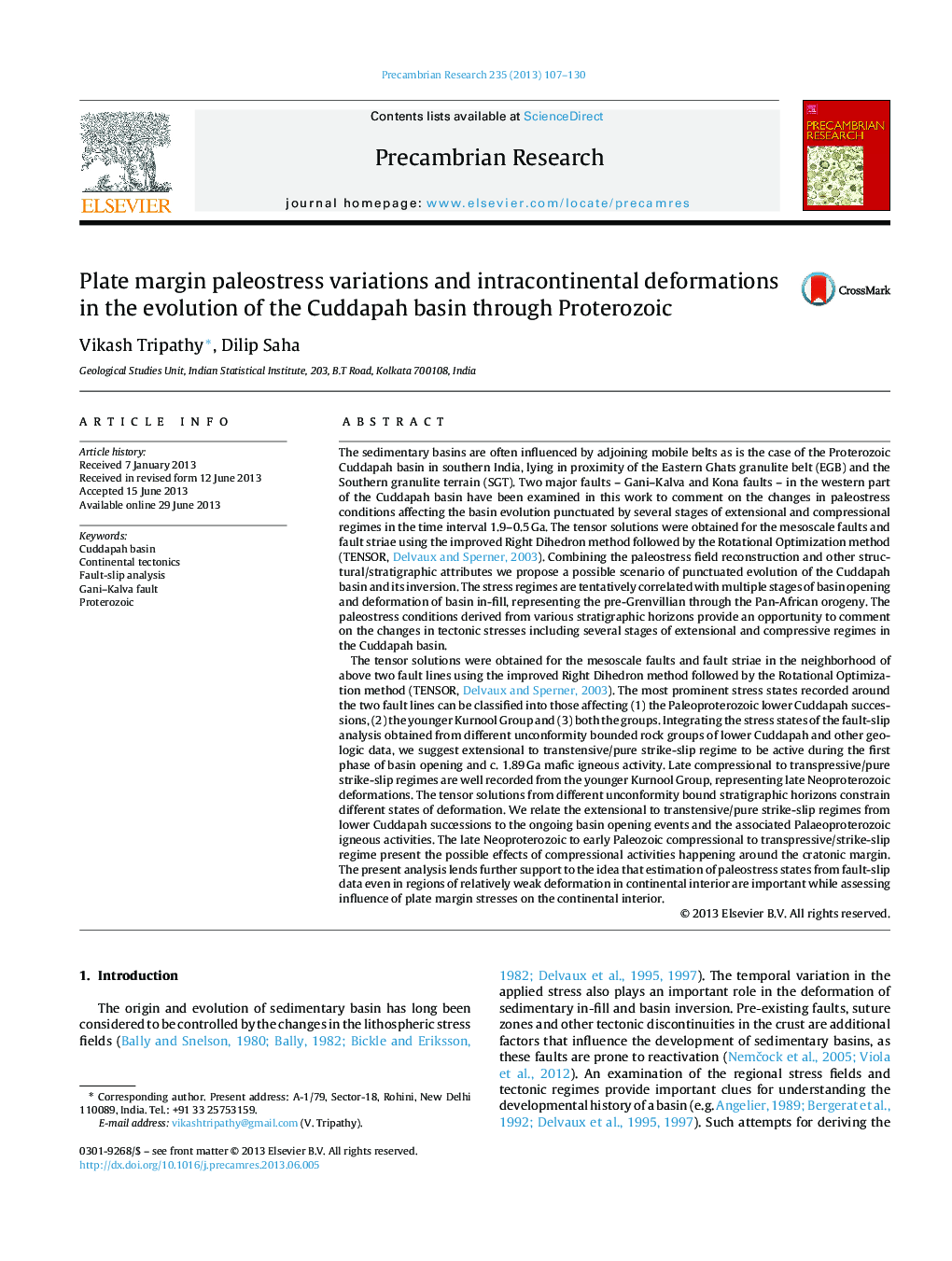| کد مقاله | کد نشریه | سال انتشار | مقاله انگلیسی | نسخه تمام متن |
|---|---|---|---|---|
| 4723145 | 1639639 | 2013 | 24 صفحه PDF | دانلود رایگان |
• Fault-slip analysis along Gani–Kalva and Kona faults were performed.
• Extensional to transtensive regime dominated the post-lower Cuddapah or Kurnool sub-basin opening.
• Late compressional to transpressive/pure strike-slip regimes dominated the post-Kurnool, coeval to the Pan-African event.
• Multiple fault-slips suggest Cuddapah basin evolution to have punctuated through various deformational events.
The sedimentary basins are often influenced by adjoining mobile belts as is the case of the Proterozoic Cuddapah basin in southern India, lying in proximity of the Eastern Ghats granulite belt (EGB) and the Southern granulite terrain (SGT). Two major faults – Gani–Kalva and Kona faults – in the western part of the Cuddapah basin have been examined in this work to comment on the changes in paleostress conditions affecting the basin evolution punctuated by several stages of extensional and compressional regimes in the time interval 1.9–0.5 Ga. The tensor solutions were obtained for the mesoscale faults and fault striae using the improved Right Dihedron method followed by the Rotational Optimization method (TENSOR, Delvaux and Sperner, 2003). Combining the paleostress field reconstruction and other structural/stratigraphic attributes we propose a possible scenario of punctuated evolution of the Cuddapah basin and its inversion. The stress regimes are tentatively correlated with multiple stages of basin opening and deformation of basin in-fill, representing the pre-Grenvillian through the Pan-African orogeny. The paleostress conditions derived from various stratigraphic horizons provide an opportunity to comment on the changes in tectonic stresses including several stages of extensional and compressive regimes in the Cuddapah basin.The tensor solutions were obtained for the mesoscale faults and fault striae in the neighborhood of above two fault lines using the improved Right Dihedron method followed by the Rotational Optimization method (TENSOR, Delvaux and Sperner, 2003). The most prominent stress states recorded around the two fault lines can be classified into those affecting (1) the Paleoproterozoic lower Cuddapah successions, (2) the younger Kurnool Group and (3) both the groups. Integrating the stress states of the fault-slip analysis obtained from different unconformity bounded rock groups of lower Cuddapah and other geologic data, we suggest extensional to transtensive/pure strike-slip regime to be active during the first phase of basin opening and c. 1.89 Ga mafic igneous activity. Late compressional to transpressive/pure strike-slip regimes are well recorded from the younger Kurnool Group, representing late Neoproterozoic deformations. The tensor solutions from different unconformity bound stratigraphic horizons constrain different states of deformation. We relate the extensional to transtensive/pure strike-slip regimes from lower Cuddapah successions to the ongoing basin opening events and the associated Palaeoproterozoic igneous activities. The late Neoproterozoic to early Paleozoic compressional to transpressive/strike-slip regime present the possible effects of compressional activities happening around the cratonic margin. The present analysis lends further support to the idea that estimation of paleostress states from fault-slip data even in regions of relatively weak deformation in continental interior are important while assessing influence of plate margin stresses on the continental interior.
Journal: Precambrian Research - Volume 235, September 2013, Pages 107–130
